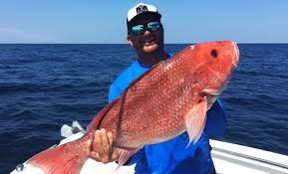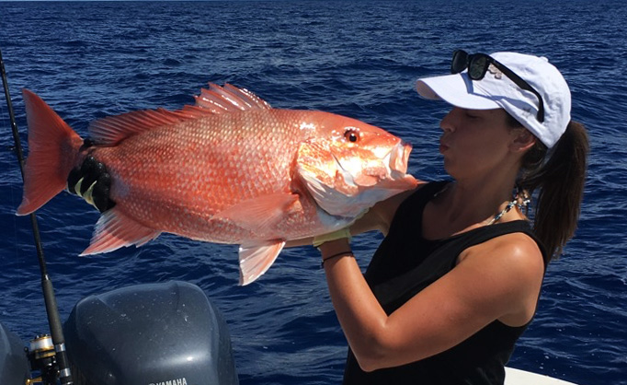This past September, the South Atlantic Fishery Management Council (SAFMC) reversed its recent trend of keeping the Atlantic Red Snapper fishery closed to recreational harvest by recommending a short recreational season later this fall. The council also recommended a short season for next summer.
In both the Gulf and Atlantic, red snapper has become one of the most contentious fisheries. Many recreational anglers who experience this fishery (as bycatch) have testified to the council that the population has exploded over the past few years and is extremely healthy. However, due to the current stock assessment models and a lack of adequate data on recreational interactions with the fishery (again, as bycatch), managers have chosen a very conservative approach so they don’t accidentally allow a harvest that could jeopardize the recovery of the fishery.
No one disputes that the fishery is recovering, and that is a good thing. Just how complete the recovery is, and how the fish should be managed for harvest (if at all) have been the points of dispute.

As has been the case with Florida fisheries in the past, the Snook and Gamefish Foundation (SGF) advocates that science should dictate the best management of our fisheries. Further, we maintain that fishery managers are obligated to arm themselves with the best available science, and that it is the job of fishery managers to make decisions that are in the best interest of the fisheries while allowing the maximum recreational angler access.

SGF trusts that council staff are performing their jobs to their best ability. Further, we are extremely pleased to be working with the Council to help collect voluntarily reported data from recreational anglers before, during, and after the proposed seasons.
Based on our experiences working with the Florida Fish and Wildlife Conservation Commission (FWC), SGF recognizes the value and limitations of self-reported angler data. Thanks to studies completed by the University of Florida, we now know that when enough anglers accurately report their fishing trip data, our iAngler/Angler Action Program (AAP) data compares very favorably to the federal data collection system, MRIP (Marine Recreational Information Program) in the areas of catch rates and reported sizes of fish. The AAP also has proven to be a superior source of information about the size and location of fish anglers let go in Florida, referred to as ‘discards’ by fishery managers. In fact, AAP data has been used in five different stock assessments in those data categories.
There is still a lot to learn about the applicability of these types of data sets. Without question, the addition of self-reported data will supplement managers’ understanding of the red snapper fishery. Just how much it will improve the accuracy of stock assessments depends on many factors. The most important factor is angler participation: anglers need to log large amounts of accurate data.
Recreational anglers sometimes express anxiety about reporting personal fishing data. There are many plausable reasons for this. Some may be afraid of their fishing spots being shared. Others may have an overall mistrust of fishery managers and their motives, and feel that the data will lead to unnecessary closures. Still others may feel that voluntary self-reporting is a first step towards some form of catch shares, a management tool applied to many commercial fisheries which rubs many anglers the wrong way for a wide variety of reasons.
In reality, none of these anxieties and fears has proven to be valid. To date, with over 150,000 fish logged in the AAP, no secret fishing spots have been spoiled. AAP data has actually played a part in opening the snook fishery after an emergency closure, not keeping anglers out. And in fact, voluntary self-reporting might be the best method of ensuring no large-scale mandatory catch-share system is ever implemented in our recreational fisheries.
Over the past 7+ years of collecting angler data, SGF’s mission has been the same: help fishery managers better understand the fish, their habitats, and the anglers interacting with them. Voluntary data programs like the AAP might not replace MRIP, but theyare poised to supplement and improve the overall management process, leading to robust fish stocks and a brighter fishing future.

Red Snapper in the South Atlantic
Voluntarily reporting accurate data in the AAP is a simple yet huge step in the right direction. With guidance from the SAFMC, SGF will open a logging portal where anglers can log their catches – the keepers and the ‘discards’ – during the proposed red snapper season. This portal will be the basis for an ARS iAngler app, which will be ready early 2018. Details will follow very soon.
For now, anglers can get a jump on helping with data collection by downloading the free iAngler app and logging all of their fishing trips. Zero-catch trips should be entered too – that is necessary for both the managers and for your personal fishing log-book that the AAP creates for fisherwomen and men.
The SAFMC has given recreational anglers the opporftunity to directly participate. Now it is our turn to show that we are ready for that gift, and we can maximize the potentials. Be a part of a #brighterfishingfuture, download iAngler and contribute your data.
*Images courtesy of Florida Sportsman Magazine
